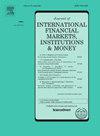在一个分段的、无弹性的股票市场中可预测的流动性特性
IF 6.1
2区 经济学
Q1 BUSINESS, FINANCE
Journal of International Financial Markets Institutions & Money
Pub Date : 2025-06-10
DOI:10.1016/j.intfin.2025.102181
引用次数: 0
摘要
根据投资者类型,探讨了两种投资策略对特质波动率、流动性风险和流动性共性的预测能力。一旦投资者的交易与给定月份的每日股票回报显著相关,他们就被定性为正反馈投资者或反向投资者。我们发现这种分类具有预测能力:正反馈交易者(主要是外国投资者)倾向于增加,而反向交易者(主要是本地个人)倾向于减少,接下来一个月的波动性和流动性。不同的投资者客户根据股票特征细分市场,质疑线性截面定价。在控制供应不弹性的情况下,我们发现股票发行/回购数据点倾斜了一些统计数据,模糊了研究结果。本文章由计算机程序翻译,如有差异,请以英文原文为准。
Predictable liquidity properties in a Segmented, inelastic stock market
We explore the predictive capability of two investment strategies on idiosyncratic volatility, liquidity risk and liquidity commonality, by investor type. Investors are characterized as positive-feedback or contrarian once their trades are significantly associated with daily stock returns on a given month. We find that this classification has predictive power: positive-feedback traders (mainly foreign investors) tend to increase, while contrarian traders (mainly local individuals) tend to reduce, the following month’s volatility and liquidity. Different investor clienteles segment the market by stock characteristics, questioning linear cross-sectional pricing. Controlling for supply inelasticity we find that share issuance/buyback datapoints tilt some of the statistics and blur the findings.
求助全文
通过发布文献求助,成功后即可免费获取论文全文。
去求助
来源期刊
CiteScore
6.60
自引率
10.00%
发文量
142
期刊介绍:
International trade, financing and investments, and the related cash and credit transactions, have grown at an extremely rapid pace in recent years. The international monetary system has continued to evolve to accommodate the need for foreign-currency denominated transactions and in the process has provided opportunities for its ongoing observation and study. The purpose of the Journal of International Financial Markets, Institutions & Money is to publish rigorous, original articles dealing with the international aspects of financial markets, institutions and money. Theoretical/conceptual and empirical papers providing meaningful insights into the subject areas will be considered. The following topic areas, although not exhaustive, are representative of the coverage in this Journal. • International financial markets • International securities markets • Foreign exchange markets • Eurocurrency markets • International syndications • Term structures of Eurocurrency rates • Determination of exchange rates • Information, speculation and parity • Forward rates and swaps • International payment mechanisms • International commercial banking; • International investment banking • Central bank intervention • International monetary systems • Balance of payments.

 求助内容:
求助内容: 应助结果提醒方式:
应助结果提醒方式:


